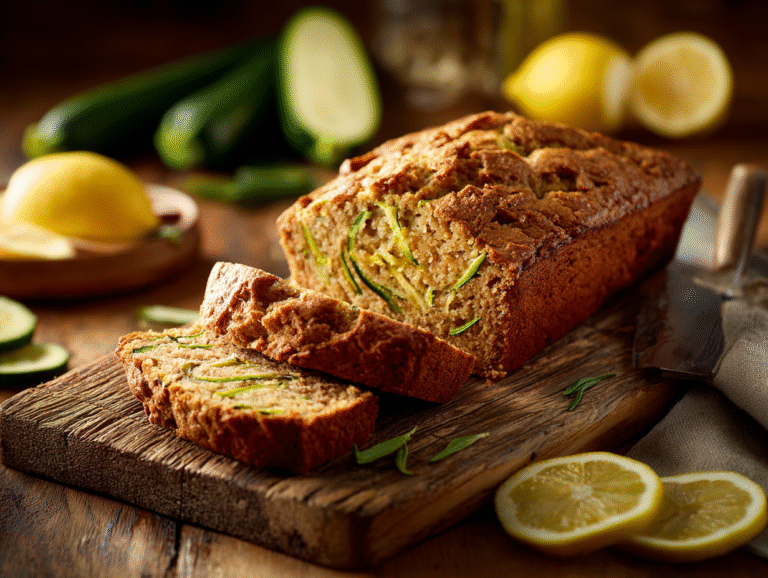Multigrain Bread Recipe – Soft & Healthy Homemade Loaf
There’s something so comforting about the smell of fresh bread filling the kitchen. While store-bought loaves can get the job done, nothing compares to a warm, homemade slice of multigrain bread. This hearty recipe combines flavor, nutrition, and the kind of comfort only home baking can deliver.
In this article, we’ll explore the story behind multigrain bread, its nutritional benefits, the exact steps for making it soft and fluffy, and creative ways to enjoy every last slice. By the end, you’ll see why multigrain bread isn’t just good for you—it’s also a joy to bake and share.
The Story Behind Multigrain Bread
A Family Memory with Multigrain Bread
I didn’t grow up in fancy kitchens, and I’ve never worn a chef’s coat. My love for food began in my grandmother’s warm Asheville kitchen, where the smell of beans simmering on the stove mingled with fresh cornbread in the oven. She taught me that food doesn’t have to be complicated to be meaningful. That’s exactly how I feel about multigrain bread. It’s simple, hearty, and built on the idea that wholesome ingredients bring people together.
Over the years, I’ve found myself coming back to bread recipes again and again, especially when I need something that feels grounding. Just like my grandmother’s meals, a loaf of homemade bread carries both nourishment and care.
Why Multigrain Bread Belongs in Every Kitchen
What I love most about multigrain bread is its versatility. Whether I’m slicing it warm for breakfast or layering it with fillings for lunch, it always fits. It’s the kind of bread that works as the star of the meal or quietly supports other flavors. Unlike plain white loaves, multigrain bread is packed with texture from oats, seeds, and whole grains. Baking it at home means I know exactly what goes into it—no preservatives, just honest ingredients.
And if you’re curious about experimenting with bread varieties, you’ll love trying something unique like keto olive bread or even a loaf of keto garlic bread when you want bold flavors. Multigrain bread is more than just food; it’s a way to create everyday comfort and health in one loaf.
Multigrain Bread Ingredients & Nutrition
What Goes into Multigrain Bread
At its heart, multigrain bread is a blend of grains and seeds that work together to create a loaf that’s both flavorful and nourishing. A typical recipe includes rolled oats, whole wheat flour, and a multigrain cereal mix, while extras like sunflower seeds, flax, pepitas, or dried fruit bring added texture. Unlike plain white loaves that rely on one type of flour, multigrain bread celebrates variety.
This combination delivers nutty undertones and a tender crumb that makes each bite more satisfying. If you’ve tried something like zero carb yogurt bread before, you’ll notice how each ingredient changes the density and taste. Multigrain blends bring balance, giving you a loaf that feels hearty without being heavy.
Is Multigrain Bread Actually Good for You?
One of the most common questions people ask is whether multigrain bread is really healthier than other options. The answer is yes—but with a small caveat. Store-bought versions can sometimes use refined flour with just a sprinkle of grains added for marketing appeal. That’s why baking it at home matters. When you make your own loaf, you’re guaranteed the full benefits of fiber, vitamins, and minerals from the grains you choose. The higher fiber content supports digestion and keeps you fuller longer, while the mix of seeds can provide omega-3s and protein.
Compared to white bread, multigrain bread delivers more sustained energy and fewer blood sugar spikes. It’s the kind of wholesome loaf that supports everyday wellness, much like a slice of keto pumpkin bread when you want something seasonal but nourishing. With a homemade recipe, multigrain bread isn’t just good for you—it’s one of the most rewarding ways to bake for your family.
How to Bake Multigrain Bread at Home
Step-by-Step Guide for the Perfect Loaf
Making multigrain bread at home may seem like a long process, but the steps are surprisingly simple once you get into the rhythm. Start by soaking the grains in hot water so they soften and blend easily into the dough. Then mix in yeast, flour, and a touch of butter for richness. Kneading is key—it develops the gluten that gives your bread structure and softness. After the dough rises and doubles in size, it’s shaped into a loaf, allowed to rise again, and baked until golden. The result is a soft, hearty bread that tastes fresh from the very first slice.
Many bakers ask about calories, and while it varies by recipe, a homemade loaf averages around 110–140 calories per slice.
| Serving Size | Calories |
|---|---|
| 1 Slice (Homemade Multigrain Bread) | 125 |
Tips for Soft & Fluffy Multigrain Bread
Even though multigrain bread is denser than white bread, there are simple tricks to keep it light and soft. First, use bread flour for a sturdy structure, but don’t skip the grains that make the loaf special. Always allow enough time for rising; rushing the process can make the bread heavy. A proper knead—about 5 minutes—helps create that springy texture.
Finally, bake on a lower oven rack to avoid over-browning the top while the inside finishes baking. If you enjoy experimenting with baking, recipes like keto zucchini bread or even a sweet treat like chocolate chip zucchini banana bread show how versatile home-baked loaves can be. With these tips, your multigrain bread will be every bit as fluffy and flavorful as you hope.
Delicious Ways to Use Multigrain Bread
Everyday Meals with Multigrain Bread
One of the best things about multigrain bread is how easily it fits into daily meals. In the morning, toast it with butter and honey for a hearty breakfast, or layer it with avocado and eggs for a protein-packed start to the day. At lunch, it makes the perfect foundation for sandwiches—its nutty texture pairs beautifully with turkey, cheese, or roasted veggies. For a cozy dinner side, try serving it with soups or stews, letting the bread soak up all the flavors.
If you love a wholesome start to your day, recipes like zucchini carrot muffins or even low-carb pancakes are great companions to a slice of multigrain toast. With its balance of flavor and nutrition, this bread can play a role in every meal.
Creative Twists with Leftover Loaf
If your loaf is a couple of days old, don’t let it go to waste—multigrain bread is just as versatile when repurposed. You can cut it into cubes and toast them into crunchy croutons for salads. For breakfast, turn slices into French toast, soaking them in egg and milk before frying them to golden perfection. Stale slices also make great breadcrumbs for coating chicken or topping casseroles.
In my own kitchen, my kids love when I crisp leftover bread in the oven and serve it as a snack with cheese or hummus. These little tricks not only save food but also bring new life to a loaf that’s past its prime. Homemade multigrain bread isn’t just about one meal—it’s about creating endless opportunities to enjoy comforting food in fresh, creative ways.
FAQs About Multigrain Bread
What are the ingredients in multigrain bread?
Multigrain bread typically includes a base of bread flour or whole wheat flour combined with a variety of grains such as oats, rye, barley, or millet. Seeds like sunflower, flax, or sesame are often added for crunch and nutrition. Some recipes even incorporate nuts, dried fruit, or pepitas for extra flavor. The mix of grains is what sets multigrain bread apart from single-grain loaves, giving it a nutty flavor and hearty texture. Baking at home ensures you’re using wholesome ingredients without unnecessary preservatives.
Is multigrain bread actually good for you?
Yes—especially when you make it yourself. Homemade multigrain bread is high in dietary fiber, which supports digestion and helps you feel fuller longer. The variety of grains provides essential vitamins and minerals like B vitamins, iron, and magnesium. Seeds such as flax or sunflower add protein and healthy fats that support heart health.
While store-bought versions can sometimes include refined flours or added sugars, homemade loaves allow you to control the ingredients for maximum nutrition. Compared to white bread, multigrain bread offers more sustained energy and fewer blood sugar spikes.
What can I make with multigrain bread?
Multigrain bread is one of the most versatile loaves you can bake. It’s perfect for toast with butter, jam, or avocado in the morning. At lunch, use it for hearty sandwiches filled with turkey, cheese, or roasted vegetables.
You can also pair it with soups, stews, or salads. If your loaf is a day or two old, turn it into French toast, croutons, or breadcrumbs. Its nutty flavor makes it just as delicious in savory dishes as it does in sweeter ones, proving that multigrain bread belongs in every kitchen.
How many calories are in homemade multigrain bread?
The calorie content can vary depending on the exact mix of grains, seeds, and add-ins, but on average, one slice of homemade multigrain bread contains about 110–140 calories. Since the bread is made with whole grains and seeds, those calories come with added benefits like fiber, protein, and healthy fats. This makes multigrain bread more satisfying and nourishing than refined white bread, meaning you’re likely to feel fuller with fewer slices. It’s a wholesome choice for anyone looking to balance nutrition and flavor.
Conclusion
Baking multigrain bread at home is more than following a recipe—it’s a way of creating comfort, nourishment, and memories with every loaf. From the first rise to the last slice, it’s a process filled with care, and the result is a bread that’s both hearty and soft. Whether you enjoy it fresh out of the oven with butter or transform leftovers into creative new dishes, multigrain bread brings warmth to the table. Just like the lessons passed down in my grandmother’s kitchen, it reminds us that the best food is simple, wholesome, and made with love.
Please let me know how it turned out for you! Leave a comment below and tag @foodiecreator on Instagram and hashtag it #foodiecreator.
PrintMultigrain Bread Recipe – Soft & Healthy Homemade Loaf
- Total Time: 4 hours 15 minutes
- Yield: 1 loaf 1x
- Diet: Vegetarian
Description
This homemade multigrain bread is soft, wholesome, and packed with grains and seeds. Perfect for breakfast, sandwiches, or snacks.
Ingredients
1/2 cup dry multigrain cereal mix or rolled oats
1 3/4 cups boiling water
2 1/4 tsp instant yeast
3 tbsp brown sugar
3 tbsp unsalted butter, softened
1 1/2 tsp salt
3 1/3 cups bread flour
Optional: 1/2 cup sunflower seeds, nuts, pepitas, raisins, or dried cranberries
Instructions
1. Pour boiling water over cereal mix, let cool.
2. Mix in yeast, sugar, and butter with flour.
3. Knead dough for 5 minutes until smooth.
4. Let rise until doubled in size.
5. Shape into loaf and place in pan.
6. Let rise again until 1–2 inches above pan.
7. Bake at 350°F for 35–40 minutes.
8. Cool before slicing and serving.
Notes
Store tightly wrapped for 2–3 days at room temperature or up to 10 days in the fridge.
Freeze baked loaf for up to 3 months.
Experiment with add-ins like seeds, nuts, or dried fruit.
- Prep Time: 3 hours 40 minutes
- Cook Time: 34 minutes
- Category: Bread
- Method: Baking
- Cuisine: American
Nutrition
- Serving Size: 1 slice
- Calories: 125
- Sugar: 3g
- Sodium: 180mg
- Fat: 3g
- Saturated Fat: 1g
- Unsaturated Fat: 2g
- Trans Fat: 0g
- Carbohydrates: 23g
- Fiber: 3g
- Protein: 4g
- Cholesterol: 5mg














